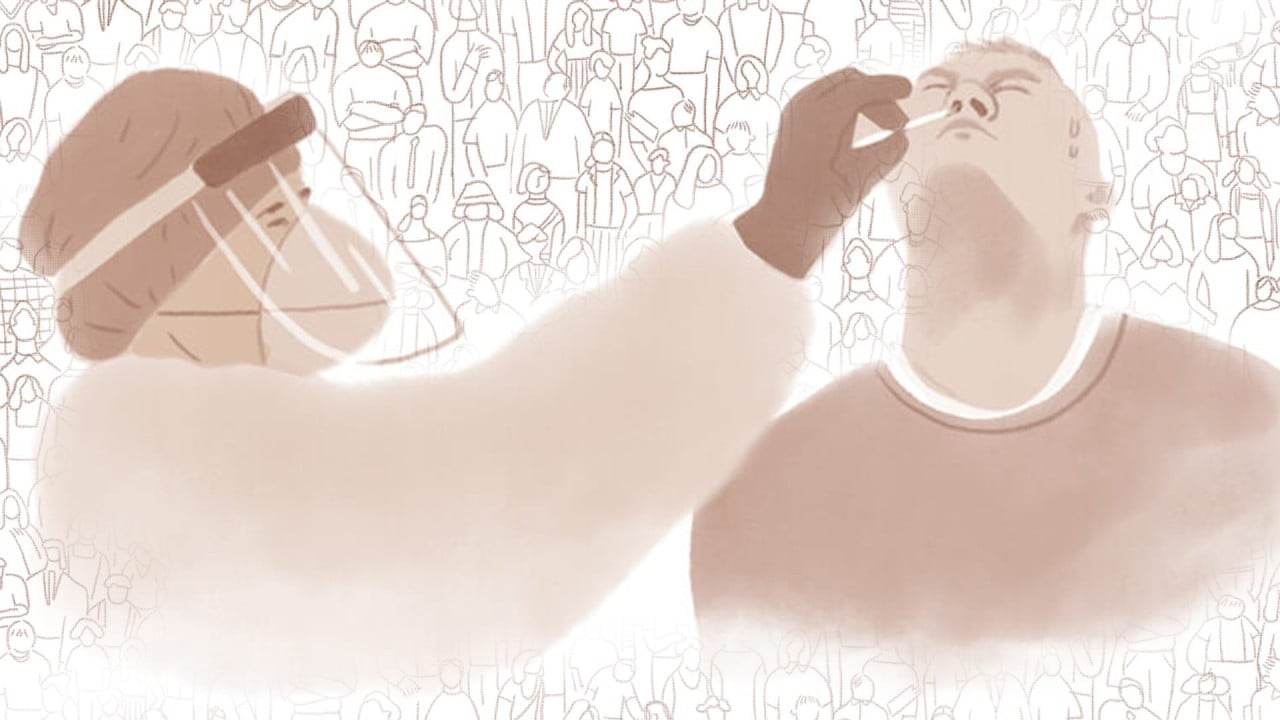
Coronavirus: test that can detect pathogen in 5 minutes developed by Nobel Prize winner Jennifer Doudna
- California-based researchers develop a test that can detect the coronavirus using gene-editing technology and a modified mobile phone camera
- Mobile phones were used for ‘their robustness and cost-effectiveness, and the fact that they are widely available’, say the researchers
As Covid-19 cases continue to shoot up in some of the world’s largest countries like the US, India and Brazil, huge backlogs of tests have strained public health systems. Most Covid-19 tests currently take at least 24 hours, but sometimes backlogs can lead to delays spanning several days.
A recent survey conducted in the US showed that the average waiting time for nasal swab-based test results – based on a sample of more than 19,000 – was 4.1 days, with 10 per cent taking 10 days or more.
There has also been an issue with reliability. Even polymerase chain reaction (PCR) tests, the so-called gold standard of Covid-19 testing, which involves amplifying a specific DNA or RNA sample by copying it millions to billions of times until it is detectable, has been marred by unreliability. Peer-reviewed studies have suggested that up to 30 per cent of PCR tests are inaccurate.

02:36
How successful was Hong Kong’s coronavirus mass testing programme?
Without swift and accurate testing, governments are deprived of real-time snapshots of how an infection is spreading. But if this new test is successfully commercialised and scaled up, people could receive nearly immediate Covid-19 tests, even from the comfort of their home.
The test can detect the virus using a mobile phone camera and a portable device fitted with low-cost laser illumination and collection optics, avoiding the bulky laboratory equipment currently being used worldwide.
“The choice of a mobile phone as the basis for our detection device was motivated by the high sensitivity of current mobile phone cameras, the simplicity of integrating a mobile phone for detection, their robustness and cost-effectiveness, and the fact that they are widely available today,” the researchers said.
Amid Trump Covid-19 woes, Pelosi unveils bill to assess presidential capacity
The breakthrough CRISPR gene-editing tool co-discovered by Doudna that won her the Nobel Prize was applied to samples of the virus that causes Covid-19. The tool makes detection of viral matter easier without having to amplify the DNA, allowing for greater accuracy.
But Feng’s CRISPR-based test that has been used in the US since May delivers test results in an hour and still requires the DNA samples to go through amplification with complex laboratory equipment.
Doudna’s team successfully combined multiple CRISPR strands in tandem, increasing the sensitivity of the test and making amplification unnecessary. This was the key behind the drastic reduction in testing time, from one hour to five minutes.
Moreover, the sensitivity of the test means not only can it detect whether a sample is either positive or negative for the coronavirus, it can quantify how much viral matter is in a sample.
“None of the current rapid testing options provide quantitative results, which could help evaluate an individual’s level of infection and progression of disease,” the paper said.

